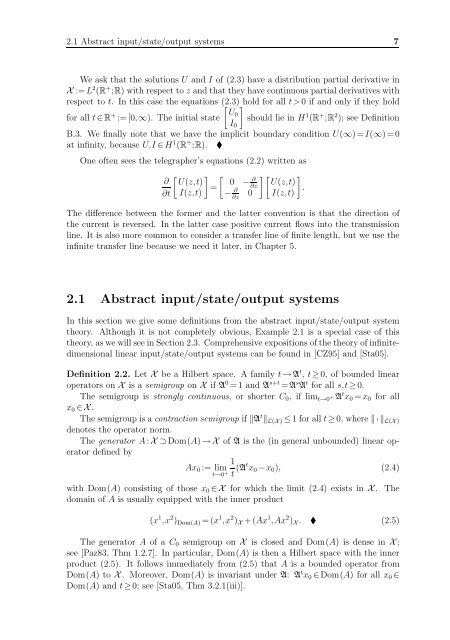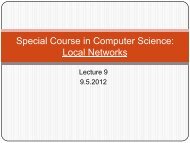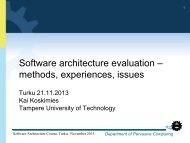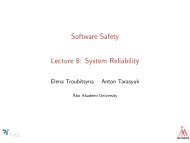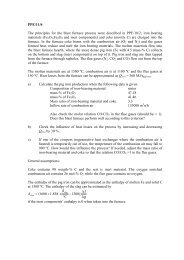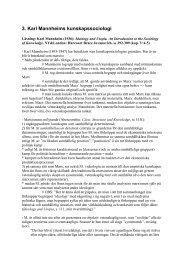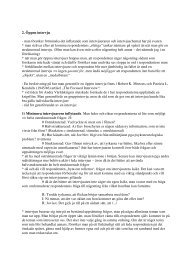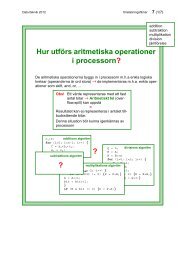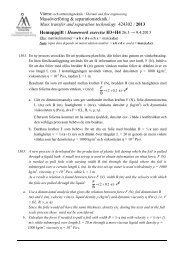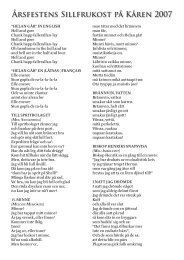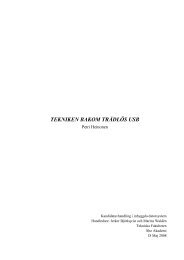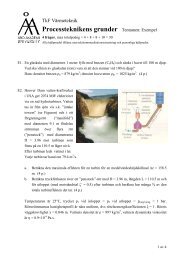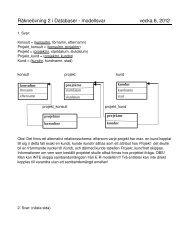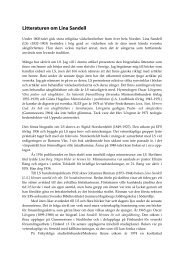Mikael Kurula - Åbo Akademi
Mikael Kurula - Åbo Akademi
Mikael Kurula - Åbo Akademi
Create successful ePaper yourself
Turn your PDF publications into a flip-book with our unique Google optimized e-Paper software.
2.1 Abstract input/state/output systems 7<br />
We ask that the solutions U and I of (2.3) have a distribution partial derivative in<br />
X :=L 2 (R + ;R) with respect to z and that they have continuous partial derivatives with<br />
respect to t. In this case the equations (2.3) hold for all t>0 if and only if they hold<br />
for all t ∈R + <br />
U0<br />
:=[0,∞). The initial state should lie in H1 (R + ;R2 ); see Definition<br />
I0<br />
B.3. We finally note that we have the implicit boundary condition U(∞)=I(∞)=0<br />
at infinity, because U,I ∈H 1 (R + ;R). <br />
One often sees the telegrapher’s equations (2.2) written as<br />
∂<br />
∂t<br />
<br />
∂<br />
U(z,t) 0 −<br />
= ∂z<br />
I(z,t) − ∂ 0 ∂z<br />
<br />
U(z,t)<br />
.<br />
I(z,t)<br />
The difference between the former and the latter convention is that the direction of<br />
the current is reversed. In the latter case positive current flows into the transmission<br />
line. It is also more common to consider a transfer line of finite length, but we use the<br />
infinite transfer line because we need it later, in Chapter 5.<br />
2.1 Abstract input/state/output systems<br />
In this section we give some definitions from the abstract input/state/output system<br />
theory. Although it is not completely obvious, Example 2.1 is a special case of this<br />
theory, as we will see in Section 2.3. Comprehensive expositions of the theory of infinitedimensional<br />
linear input/state/output systems can be found in [CZ95] and [Sta05].<br />
Definition 2.2. Let X be a Hilbert space. A family t →A t , t ≥0, of bounded linear<br />
operators on X is a semigroup on X if A 0 =1 and A s+t =A s A t for all s,t ≥0.<br />
The semigroup is strongly continuous, or shorter C0, if lim t→0 +A t x0 =x0 for all<br />
x0 ∈ X.<br />
The semigroup is a contraction semigroup if A t L(X) ≤1 for all t ≥0, where ·L(X)<br />
denotes the operator norm.<br />
The generator A:X ⊃Dom(A) → X of A is the (in general unbounded) linear op-<br />
erator defined by<br />
1<br />
Ax0 := lim<br />
t→0 + t (Atx0 −x0), (2.4)<br />
with Dom(A) consisting of those x0 ∈ X for which the limit (2.4) exists in X. The<br />
domain of A is usually equipped with the inner product<br />
(x 1 ,x 2 )Dom(A) =(x 1 ,x 2 )X +(Ax 1 ,Ax 2 )X. (2.5)<br />
The generator A of a C0 semigroup on X is closed and Dom(A) is dense in X;<br />
see [Paz83, Thm 1.2.7]. In particular, Dom(A) is then a Hilbert space with the inner<br />
product (2.5). It follows immediately from (2.5) that A is a bounded operator from<br />
Dom(A) to X. Moreover, Dom(A) is invariant under A: A t x0 ∈Dom(A) for all x0 ∈<br />
Dom(A) and t ≥0; see [Sta05, Thm 3.2.1(iii)].


